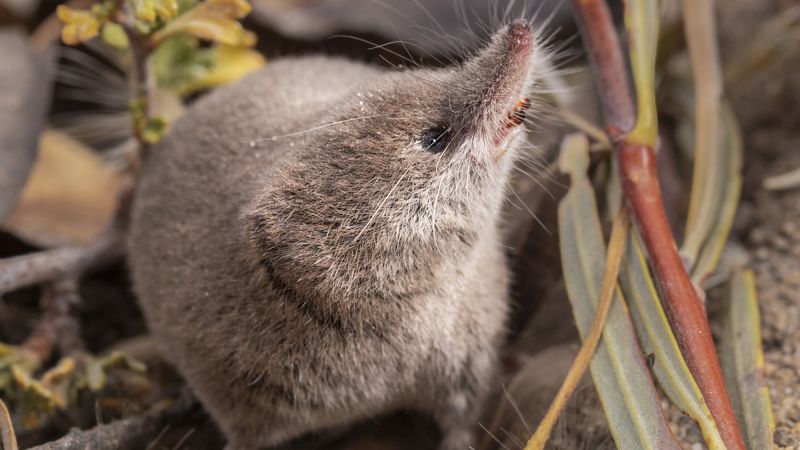In a remarkable breakthrough for wildlife photography and conservation, wildlife photographer Vishal Subramanyan and a dedicated team of student scientists, Prakrit Jain and Harper Forbes, achieved what had never been done before: capturing live photographs of the Mount Lyell shrew (Sorex lyelli). Their efforts marked an extraordinary moment in ecological research, highlighting the importance of documenting rare species and raising awareness about their conservation needs.
The Mount Lyell shrew holds a unique place in California’s biodiversity as the only mammal species in the state that had evaded human cameras prior to this exploration. The California Academy of Sciences confirmed this intriguing fact, making the team’s successful capture and documentation even more significant. The shrew’s elusive nature has long baffled researchers, and its insatiable appetite—having a remarkably high metabolic rate—complicated traditional capturing methods, leading to the species’ rarity in museum collections and scientific observation.
The adventure began in October when Jain, a passionate student from the University of California, Berkeley, expressed his astonishment at the lack of photographic evidence for the Mount Lyell shrew. Motivated by a sense of urgency, he enlisted the expertise of graduates Subramanyan and Forbes to explore the rugged landscape of eastern Sierra Nevada in search of these tiny mammals. The mission was clear: locate and photograph live specimens to shine a light on the often-overlooked animals inhabiting the unique ecosystem of Lee Vining, a small community located approximately 300 miles east of San Francisco.
Determining the best possible methods to document the elusive shrews, the trio collaborated with the University of California Berkeley’s Museum of Vertebrate Zoology to design an efficient capturing strategy. They set out over three days with more than 100 pitfall traps—ingeniously devised to lure shrews into a safe environment where they could be closely monitored. Time was not on their side, as shrews can perish if they go without food for too long. As a result, the team maintained a vigorous watch over their traps, with members alternating between brief sleeps to ensure the utmost care for their captured subjects.
Within hours of setting up, the team’s efforts paid off. They successfully caught their first Mount Lyell shrew, quickly leading to a total of six individuals being photographed and monitored before being released back into their habitat. This early success proved not only the accessibility of the shrews but also their underappreciated status within the ecosystem. Understanding this species also required the team to employ rigorous genetic testing, as they captured four other shrew species in the area, some resembling the Mount Lyell shrew closely.
Forbes commented on the challenges they faced during the handling of the small mammals. Despite their minute size, the shrews exhibited defensive behavior, displaying bites and even a venomous nature. The team resorted to innovative methods of weighing the shrews—you can imagine weighing a creature just a few grams—and preserving some of their tails, which were used for genetic testing without compromising the animals’ well-being.
Remarkably, by focusing on live specimens, the team was able to observe the shrews’ natural behaviors firsthand. They witnessed peculiar habits, such as food hoarding and taking “micronaps,” lending valuable insight into the daily lives of these seldom-seen mammals. This type of experiential connection between scientists and wildlife can enhance public understanding of species conservation, bridging a gap often left by documentary photography of animals in sterile conditions.
However, the Mount Lyell shrew faces an existential threat from climate change. Researchers warn that significant portions of their specific cold-weather habitat could be lost as global temperatures continue to rise, possibly leading to a 90% decline in suitable environments. Subramanyan notes the importance of public awareness; without exposure through photography and outreach, the fate of this species could quietly slip by, overshadowed by the myriad of larger, more publicized conservation stories. Their initiative sends a crucial reminder to the world about the unsung heroes of biodiversity that deserve our attention and preservation efforts.











